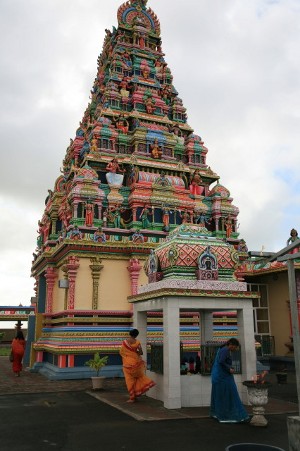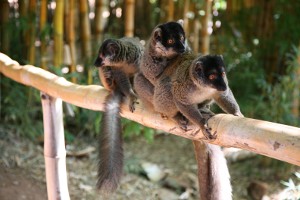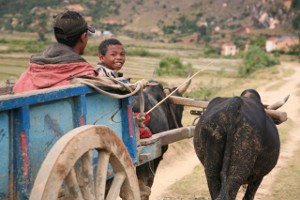Mauritius (Ile Maurice) conjured up for me French-accented men with brown bodies and charming personas. I had expectations of French food and the opportunity to practise my French.
Indeed I found all of those things. But I found Creole to be a more common language than French. I saw more people of Indian descent than French or African. I had more curries than crêpes.
One morning, walking from the northern suburbs of Port Louis, the capital, I visited relics of the Mauritian past of colonisation and slavery, as well as temples revering Buddhist, Christian, Hindu and other gods. My tour guide, Man, at Mahébourg reinforced the multicultural impression, with both a Hindu and a Christian mini-shrine in his tour bus.
In Mauritius one can also pay homage to the long-lost dodo and other extinct species, a consequence of Western colonisation. At Ile aux Aigrettes (Egret Island) a set of life-size sculptures of a number of extinct species is displayed inside the Visitors Centre and outside in the forest. Ile aux Aigrettes is also deprived of its namesake, the extinct egrets. But a visit to this small island, less than one kilometre from Pointe Jerome near Mahébourg is heartening.
Here the Mauritian Wildlife Foundation is saving a number of endemic plant species. On this coral island is the last remnant of lowland coastal forest, long gone from mainland Mauritius. Aldabra Tortoises have been introduced from Seychelles to replace an extinct species. And some plant and animal species on the verge of extinction are still hanging on: the Olive White-Eye, Guenther’s Geckos, and the Ile aux Aigrettes ebony tree.
The jagged spine of Mauritius is a very appealing backdrop for many land- based excursions, whether the foreground is a Hindu or Chinese temple, an ice-cream van, a satellite dish, a wildlife park, or a sugar cane field.
With early sugar cane plantations that relied on slaves from Madagascar and Africa, and indentured labour from India and China, sugar cane has a lot to answer for in the history of Mauritius. As Bernardin de Sainte-Pierre a French seafarer said in his 18th Century travel chronicle “Journey to Mauritius”: I do not know if coffee and sugar are necessary for happiness in Europe, but I do know that these two plants have led to misery…
The name of Bernardin de Sainte-Pierre first came to my attention at the Botanical Gardens at Pamplemousses. They were established during French colonisation when Mauritius was the Isle de France. Here a prominent stone engraving attributes a quotation to him extolling the importance of “une plant utile” (useful plants) over monuments and gold mines.
The Botanical Gardens are eclectic and don’t simply propagate and display species from Mauritius. For example, it has 80 species of palm trees including four species that are endemic to Mauritius, a significant collection of spice trees, and a stunning focal point, the Giant Amazon Waterlily.
Agriculturally, Mauritius had a lot to offer. Vanilla pods are sold in the Port Louis market in large bundles and you can see vanilla growing at Le St. Aubin in the South of Mauritius where a plantation-style homestead from 1819, keeps watch over crops of tea, vanilla, sugar and palm. It also distills sugar to rum. When a vanilla pod had been steeping in the bottle of rum, I found its taste exquisite. A developing love affair with vanilla also meant that I arrived home with vanilla tea.
A short distance away from the market at Port Louis, Chinatown had a decadent and decayed charm with olde-world verandahs and little restaurants closeted on the first storeys of shops and other buildings.
My two short stays in Mauritius were stopovers between Madagascar and Australia, so my visits only scratched the surface of the island country. Next time I will also breach the surface of the surrounding sea with some diving or snorkelling.
But travelling around on buses or with my guide, Man, gave me a feeling for the people and history of the country.
The highlight was undoubtedly the side trip to delightful Ile aux Aigrettes, where the conservation and care is making up for lost dodos.





